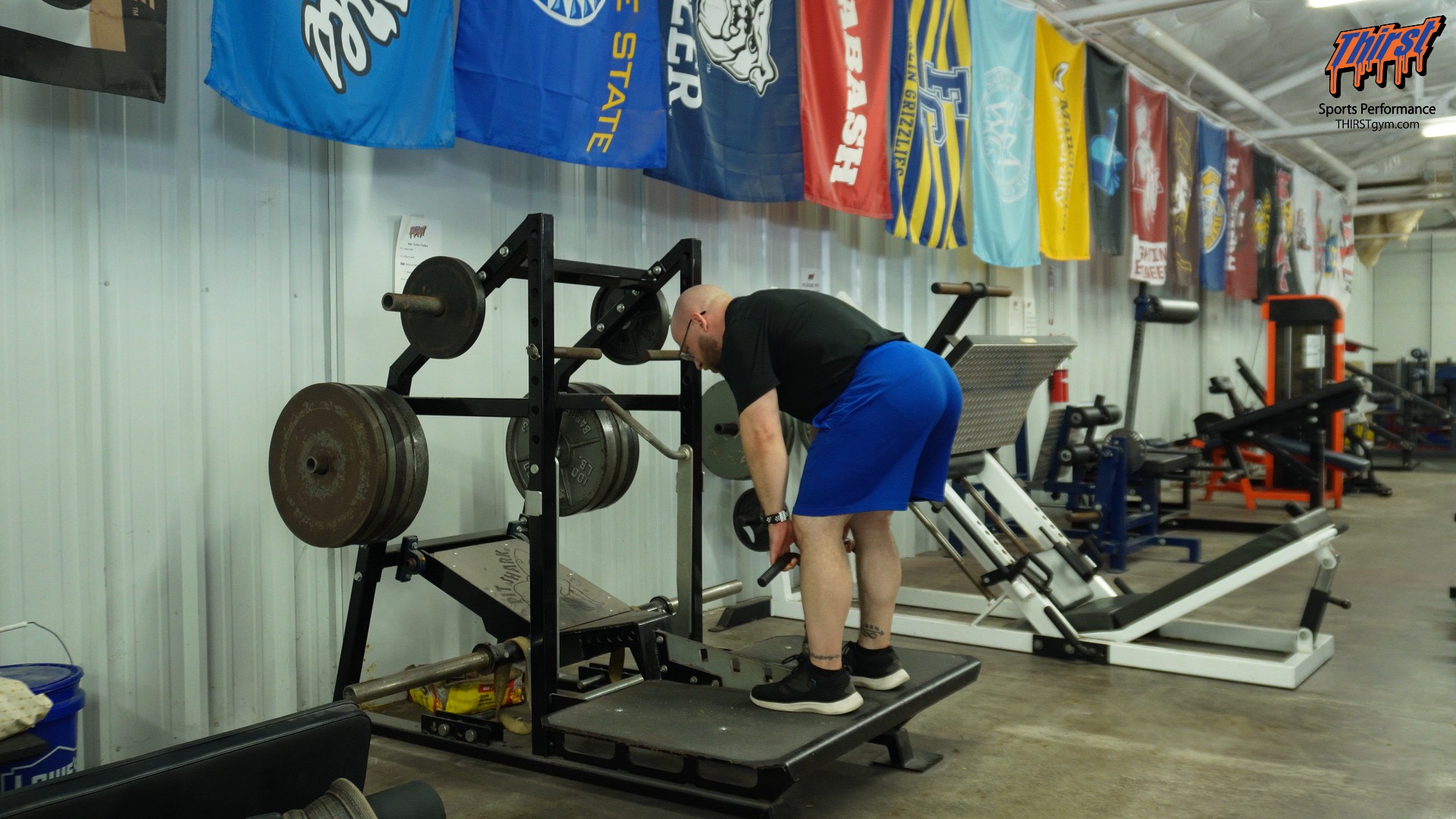Belt Squat Romanian Deadlift: The Ultimate Lower Body Accessory Exercise
Are you looking to add variety to your hip hinge training while targeting your glutes and hamstrings in a completely new way? The belt squat Romanian deadlift (RDL) might be exactly what your workout routine needs. This innovative exercise variation combines the proven benefits of the traditional Romanian deadlift with the unique loading mechanics of a belt squat machine, creating an exceptional accessory movement for building posterior chain strength.
Watch the video below on how to maximize this exercise.
What Is the Belt Squat RDL?
The belt squat Romanian deadlift is a hip hinge exercise that uses a belt squat machine instead of traditional barbells or dumbbells for resistance. This exercise maintains all the muscle-building benefits of a standard RDL while offering a fresh approach to loading the movement pattern. By utilizing the belt squat machine’s chain or cable system, you can perform Romanian deadlifts without placing any load on your spine, making it an excellent option for those seeking lower back-friendly alternatives.
Equipment Needed for Belt Squat RDLs
To perform this exercise effectively, you’ll need two key pieces of equipment. First, you’ll require a belt squat machine such as the Pit Shark or any similar apparatus that allows for belt-loaded movements. These machines are becoming increasingly common in well-equipped gyms and provide the foundation for this exercise variation.
Second, you’ll need a straight bar or bar attachment that connects to your belt squat machine’s chain or cable system. The specific type of bar isn’t crucial to the exercise’s effectiveness, though many people find that a comfortable grip attachment makes the movement more enjoyable to perform. The bar simply serves as your connection point to the machine’s resistance system.
Step-by-Step Exercise Technique
Proper form is essential for maximizing the benefits of the belt squat RDL while minimizing injury risk. Begin by setting up the bar attachment on your belt squat machine, preferably using the furthest connection point to create the largest lever arm possible. This positioning will provide the most ideal mechanical advantage for the movement.
Position yourself with your feet underneath your hips in what’s often called a “jump stance.” This foot position provides optimal stability and power transfer throughout the movement. Maintain a tall chest position with your lats slightly engaged, though you shouldn’t over-activate these muscles. Keep your hands positioned against your thighs, similar to how you would hold them during a traditional Romanian deadlift.
The movement itself follows the classic RDL pattern. Allow your knees to soften slightly, then initiate the movement by pushing your hips back while maintaining the natural arch in your lower back. Focus on feeling a significant stretch in your hamstrings as you lower the weight, aiming to get the bar below your kneecaps at the bottom position. Drive your hips forward to return to the starting position, emphasizing the powerful hip extension that characterizes effective Romanian deadlifts.
Primary Benefits and Muscle Groups Targeted
The belt squat RDL excels at developing both the glutes and hamstrings, particularly emphasizing the eccentric or lowering portion of the movement. This eccentric emphasis is crucial for building muscle mass and improving strength in the posterior chain. The exercise follows the fundamental hip hinge movement pattern, which is essential for athletic performance and everyday functional movement.
One of the most significant advantages of this variation is spinal decompression. Unlike traditional barbell Romanian deadlifts, the belt squat RDL eliminates axial loading on the spine, making it an excellent choice for those with lower back concerns or anyone looking to reduce spinal stress while still training the hip hinge pattern effectively.
The belt squat machine also provides a unique training stimulus compared to free weights. The constant tension from the machine’s resistance system can enhance muscle activation throughout the entire range of motion, potentially leading to improved muscle development and strength gains.
Programming and Training Recommendations
For most trainees, the belt squat RDL works best as an accessory exercise rather than a primary movement. Consider programming anywhere from two to four sets with repetition ranges between eight and twenty repetitions. The higher repetition ranges work particularly well since this exercise excels at building muscle mass and improving movement quality rather than maximal strength development.
This exercise shines when you’ve already mastered the basic hip hinge pattern through traditional Romanian deadlifts. Once you have that foundation, the belt squat RDL becomes an excellent tool for adding training volume and variety to your posterior chain development. It’s particularly valuable when you want to train the hip hinge pattern without the setup complexity of barbell movements.
Why Add Belt Squat RDLs to Your Routine
The primary appeal of the belt squat Romanian deadlift lies in its ability to provide variety while maintaining training effectiveness. While there’s nothing revolutionary about performing RDLs on a belt squat machine, this variation offers a refreshing change from standard barbell and dumbbell options. For those who already own or have access to a belt squat machine, it’s an excellent way to maximize the equipment’s versatility beyond traditional squatting movements.
This exercise also proves invaluable when you want to train your glutes and hamstrings without the overhead of setting up barbells or dealing with heavy loading procedures. The convenience factor alone makes it an attractive option for accessory work, especially during busy training sessions or when gym equipment availability is limited.
The belt squat RDL represents an intelligent approach to exercise variation that maintains the fundamental benefits of Romanian deadlifts while offering unique advantages. Whether you’re looking to reduce spinal loading, add training variety, or simply make better use of your belt squat machine, this exercise deserves consideration in your lower body training arsenal.








